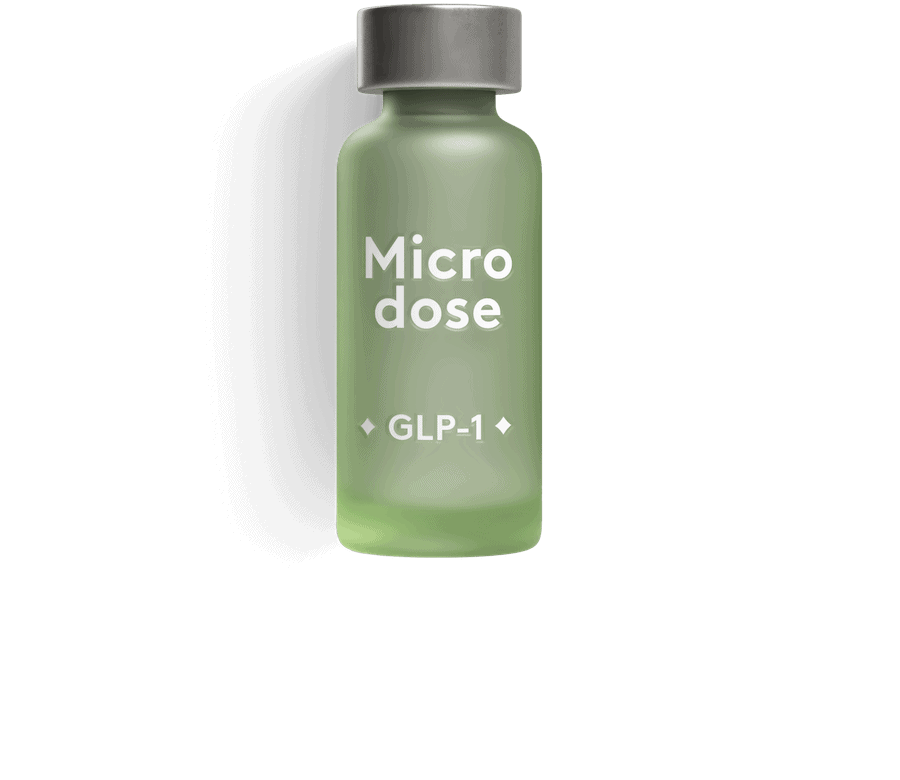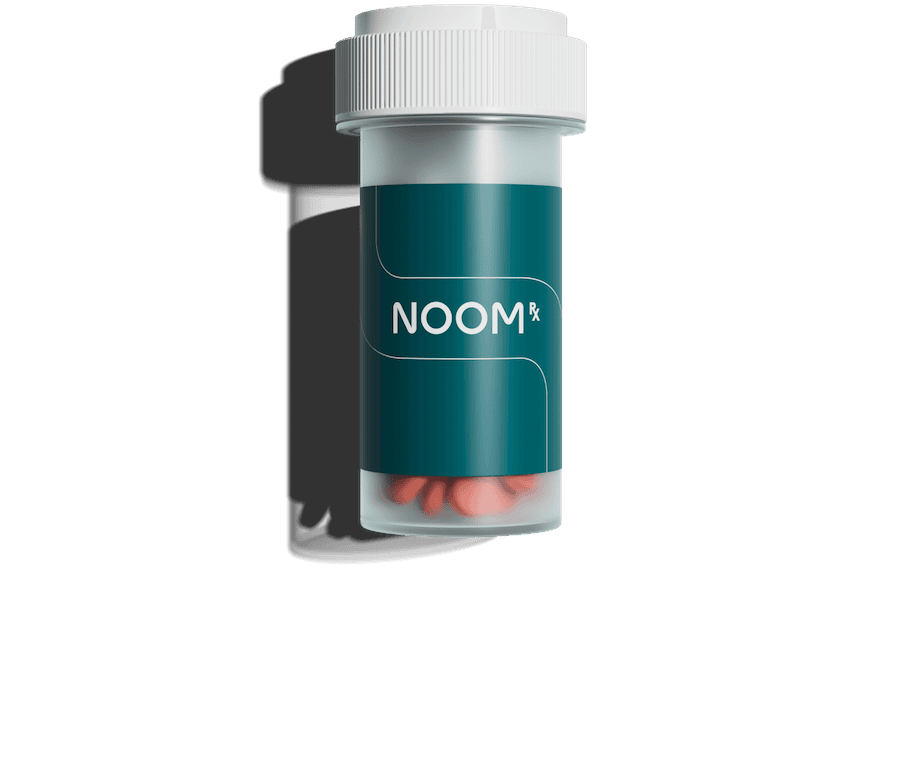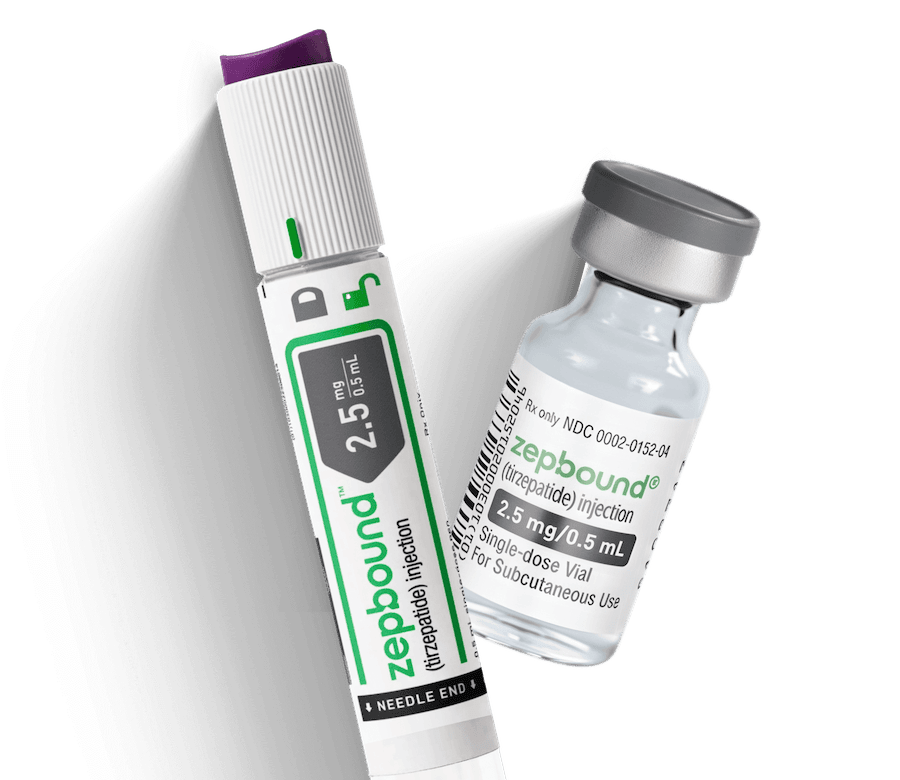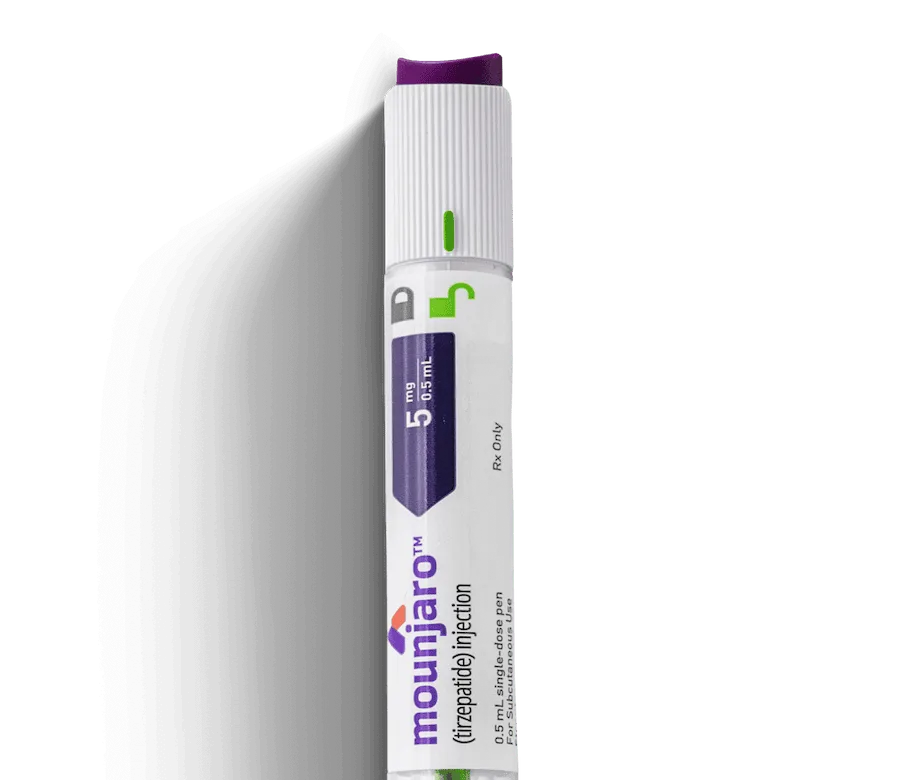- What is Jardiance?
- How does it cause weight loss?
- How much weight can I lose?
- How quickly will I lose weight with Jardiance®?
- What does Jardiance® cost?
- How to take Jardiance®
- Jardiance®: Dosage adjustments & personalization
- Jardiance®: Side effects and safety
- Jardiance® vs. other weight loss medications
- FAQs about Jardiance®
- The bottom line: Weight loss is limited with Jardiance®
What you’ll learn:
- Jardiance® is a medication that lowers blood sugar by helping the kidneys remove excess glucose through urine.
- Jardiance® is FDA-approved for type 2 diabetes, heart failure, and chronic kidney disease, and studies have also found some weight loss as a side effect of the drug.
- Studies show people can lose an average of 3% of body weight with Jardiance® over 6 months.
GLP-1s like Zepbound® and Wegovy® often dominate the conversation when people are talking about using a weight loss medication. But they aren’t the only prescription drugs that can influence weight. Another option that people sometimes turn to for off-label weight loss is a medication called Jardiance®.
Jardiance® (empagliflozin) was first approved by the FDA in 2014 to help people manage blood sugar. Over the years, its approved uses have expanded to include lowering the risk of cardiovascular death in people with type 2 diabetes and heart disease, and treating heart failure and chronic kidney disease. Its versatility has made it a valuable medication in multiple areas of healthcare.
Even though it’s not FDA-approved specifically for weight loss, studies show that Jardiance® can lead to weight loss of about 3% of starting body weight. While it is a lot less than what’s typically seen with GLP-1s (15 to 20%), Jardiance can still help people lose weight over time with the right lifestyle and diet changes.
Let’s learn more about how it works and whether it’s something you should consider for weight loss.
What is Jardiance® and how does it work?
Jardiance® works very differently from GLP-1s. GLP-1s help with weight loss by mimicking a hormone that lowers appetite, slows digestion, and regulates blood sugar. Jardiance® belongs to a class of drugs called SGLT2 inhibitors, which means it blocks a protein called sodium-glucose co-transporter 2 (SGLT2) in the kidneys.
Typically, your kidneys filter sugar from your blood and reabsorb most of it back into your body, where you either use it for daily activities or it’s stored for later use. Jardiance® interrupts that reabsorption process, so more glucose exits the body through urine instead of being stored. This helps lower blood sugar levels in people with diabetes and also lowers the calories that your body absorbs, leading to weight loss over time.
How does it cause weight loss?
Jardiance® causes your body to flush out some of the sugar you eat, so you don’t end up absorbing those calories. Over time, that can create an energy deficit. Research shows this adds up to about 240 to 400 calories a day lost through urine. To make up the difference, your body may start tapping into stored fat for fuel, which helps explain why people often see modest weight loss while taking the medication.
How much weight can I lose taking Jardiance®?
While Jardiance® isn’t approved as a weight loss drug, research shows it often helps people gradually lose a modest amount of weight.
In a 24-week study of people with type 2 diabetes, those taking Jardiance® lost an average of about 3% of their starting body weight. That’s about 6 pounds for a 200-pound person.
While that isn’t a significant amount of weight, everyone responds differently. The best results tend to come when the medication is paired with balanced eating, regular activity, and other healthy habits.
How quickly will I lose weight with Jardiance®?
Studies show it can take up to 24 weeks to notice meaningful fat loss. Healthy habits are the key to seeing steady results over time.
Rx weight loss, the right way, with Noom
Get access to prescription weight loss medication with Noom.What does Jardiance® cost?
The list price is about $630 a month, but the amount you actually pay will depend on your coverage and whether you qualify for savings. If you’re prescribed Jardiance® for weight loss only, insurance plans are unlikely to cover it. If you are prescribed it for diabetes or another approved use, your insurance may cover it.
- Private insurance: Most plans cover Jardiance® when prescribed for diabetes, heart, or kidney conditions. Copays can range from $0 to $50 per month.
- Medicare: Copays typically fall between $0 and $50 per month, but out-of-pocket costs can vary throughout the year depending on which phase of your Part D benefit you’re in.
- Medicaid: Copays are typically $0 to $8 per month, though exact amounts vary by state. People using this option won’t be eligible for the manufacturer’s savings card.
- Veterans Administration (VA): Jardiance® generally costs about $11 per month for a 30-day supply.
- TRICARE: Costs vary by where you fill your prescription—$0 at a military hospital, around $43 at retail pharmacies for a 30-day supply, or about $38 for a 90-day home delivery.
Manufacturer assistance:
- Jardiance® Savings Card: Eligible people, those with commercial insurance, can lower their cost to as little as $10 a month.
- BI Cares Patient Assistance Program: Offers free medication for people who qualify based on insurance status and income.
Always check with your insurance provider and pharmacy for your exact cost and to explore available savings programs.
How to take Jardiance®
Jardiance® is taken once a day, usually in the mornings. You can take it with or without food, which means you don’t need to plan it around meals. The key is consistency in picking a time that works for you and sticking with it each day.
Jardiance® comes in two dose strengths: 10 mg and 25 mg
You will start at 10 mg once daily, and if additional blood sugar control is needed and you tolerate the medication well, your healthcare provider may increase your daily dose to 25 mg.
Jardiance®: Dosage adjustments & personalization
Your doctor may adjust your dose based on how your body responds and your overall health. Here are some common reasons your dose might change:
- Blood sugar goals: Most people start with 10 mg once a day. If you’re tolerating it well but need more help with blood sugar control, your provider may increase it to 25 mg.
- Side effect tolerance: If you’re dealing with things like dehydration or low blood pressure, your doctor may recommend sticking with the lower 10 mg dose to help you stay comfortable.
- Kidney function: Because Jardiance® works through your kidneys, your provider will keep an eye on your kidney health. If anything changes, your plan may need adjusting.
- Upcoming surgery or illness: Sometimes Jardiance® needs to be paused for a surgery or if you’re fasting for a procedure. Once you’re stable and eating again, your provider will let you know when it’s safe to restart.
If at any point you feel like your dose isn’t working as expected, or side effects are becoming hard to manage, it’s a good idea to check in with your healthcare team. They can adjust your plan so it stays both safe and effective.
Jardiance®: Side effects and safety
People tend to tolerate Jardiance® well, but it can cause side effects. Most are mild and improve over time, but a few require closer attention or medical care.
Common side effects
Since Jardiance helps the kidneys remove sugar through urine, it can cause some issues with infections, like:
- Urinary tract infections: More frequent urination and sugar in the urine can create conditions for infection.
- Genital yeast infections: Extra sugar in the urine can allow yeast to grow more easily.
Rare but serious side effects
While most people taking Jardiance® experience only mild side effects, there are rare but serious reactions that you need to be aware of.
- Serious urinary tract infections (UTIs): Call your doctor right away if you notice burning during urination, fever, pelvic or back pain, or blood in the urine.
- Ketoacidosis: Seek emergency care immediately for nausea, vomiting, stomach pain, unusual tiredness, or trouble breathing, even if your blood sugar isn’t very high.
- Dehydration and low blood pressure: Extra fluid loss may lead to dizziness, fainting, or feeling lightheaded. Get medical assistance if you feel weak or have trouble standing.
- Low blood sugar (hypoglycemia): Usually happens only when Jardiance is taken with insulin or other diabetes medicines. Check your blood sugar and call your doctor if you notice symptoms such as shakiness, sweating, rapid heartbeat, or confusion.
- Fournier’s gangrene (severe genital infection): An extremely rare but serious infection of the genital area. Seek emergency medical care right away if you have a fever with pain, redness, and swelling in the genital area.
If you notice any new or unusual symptoms, don’t wait—contact a healthcare provider so they can assess whether you need immediate medical care or a change to your prescription.
Jardiance® vs. other weight loss medications: Weight loss potential
Jardiance® isn’t FDA-approved for weight loss, but studies show it can lead to modest reductions in body weight over time. Below is a quick comparison of how Jardiance® stacks up against other commonly used medications when it comes to type, dosing, and average weight loss.
| Medication | How to take it | Average weight loss |
|---|---|---|
| Jardiance® (empagliflozin) | Daily pill | 3% |
| Zepbound® (tirzepatide) | Weekly injection | 21% |
| Wegovy® (semaglutide) | Weekly injection | 15% |
| Contrave® (naltrexone and bupropion) | Daily pill | 12% |
| Qsymia® (phentermine/topiramate ER) | Daily pill | 10% |
| Metformin (off-label) | Daily pill | 7% |
| Saxenda® (liraglutide) | Daily injection | 6% |
Your healthcare provider can help decide which approach fits your needs and long-term weight management plan.
Frequently asked questions about Jardiance®
Here’s what people often ask about Jardiance® and weight loss.
How rapid is weight loss with Jardiance?
Weight loss with Jardiance® happens gradually. Some people may notice small changes in the first couple of months, but it can take up to 24 weeks to see the full effect.
Can you drink alcohol while taking Jardiance?
It’s best to keep alcohol intake moderate and discuss it with your healthcare provider. Alcohol can increase the risk of low blood sugar (hypoglycemia) if you’re on insulin or certain other diabetes medications, and it can also raise the chance of dehydration.
What happens if you miss a dose of Jardiance?
If you miss a dose, take it as soon as you remember, but only if it’s not close to your next scheduled dose. Don’t take two doses at once to make up for a missed one. Setting a daily reminder on your phone can help you take it on schedule.
How long can you safely take Jardiance?
Jardiance can be taken long-term when prescribed and monitored by your healthcare provider. Your doctor will regularly check your kidney function and overall health to ensure the medication continues to be safe and effective.
Can you stop taking Jardiance at any time?
You shouldn’t stop taking Jardiance without talking to your healthcare provider first. While it doesn’t typically cause withdrawal symptoms, your doctor may want to monitor you for changes in blood sugar (if you have diabetes) or adjust your treatment plan.
What kind of diet and exercise plan works best with Jardiance?
A balanced diet and regular activity help Jardiance® work more effectively. Limiting refined carbs and focusing on lean proteins, high-fiber foods, and healthy fats can help stabilize blood sugar and support gradual weight loss. Pairing the medication with daily movement amplifies its benefits and supports long-term heart and kidney health.
Subscribe to Noom Digest
With the latest Noom news, insightful articles, and a healthy dose of inspiration, Noom Digest might just become your favorite newsletter.The bottom line: Weight loss is possible but limited with Jardiance®
Jardiance® is first and foremost a diabetes, heart, and kidney medication, but its ability to help with gradual weight loss has made it part of the broader weight-management conversation.
Weight loss with Jardiance® is minimal, an average of 3% of starting body weight over about six months. Deciding if it’s right for you depends on personal goals, how long you plan to continue treatment, and financial factors such as insurance coverage
If you’re interested in exploring medications for weight loss, see if you qualify for Noom Med. A clinician will help you explore the options, prescribe them if needed, and pair them with personalized coaching to help you reach your goals.
Why you can trust us
At Noom, we’re committed to providing health information that’s grounded in reliable science and expert review. Our content is created with the support of qualified professionals and based on well-established research from trusted medical and scientific organizations. Learn more about the experts behind our content on our Health Expert Team page.












